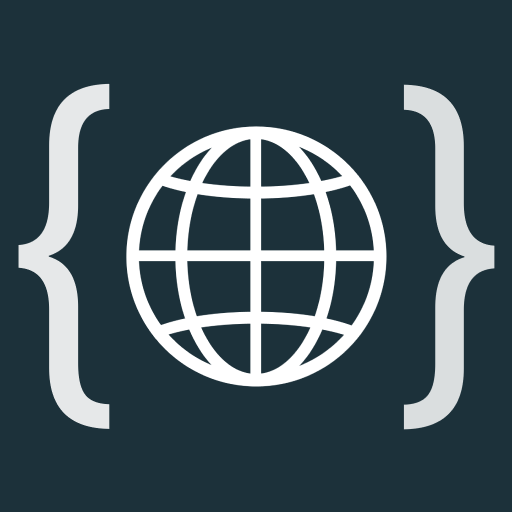Web Development IDE
About this app
In today's digital landscape, possessing the appropriate tools is critical for achieving success in web development.
A Web Development Integrated Development Environment (IDE) can significantly streamline the coding process, facilitating the creation of visually appealing and functional websites.
This article aims to elucidate what a Web Development IDE is and to highlight its advantages for developers.
We will examine the foundational elements of web design—HTML, CSS, and JavaScript—before providing an overview of some of the most popular IDEs currently available.
Additionally, practical tips will be offered to enhance workflow and mitigate common pitfalls.
Engage with this content to learn how to enhance your web development experience.
What is a Web Development IDE?
A Web Development Integrated Development Environment (IDE) is a comprehensive software suite that optimizes the processes of coding, debugging, and deploying web applications. It consolidates essential tools, including a code editor, debugging instruments, and performance optimization features, all designed to facilitate an efficient web development workflow.
With the increasing prevalence of programming languages such as HTML, CSS, and JavaScript, these environments have become essential for developers aiming to enhance productivity and maintain code quality across various platforms and frameworks.
One of the prominent features of these IDEs is syntax highlighting, which enables developers to easily distinguish between different code components, thereby reducing errors and improving readability. Additionally, autocompletion accelerates the coding process by suggesting potential code snippets as developers type, which not only expedites writing but also minimizes the likelihood of typographical errors.
Furthermore, integrated version control systems promote seamless collaboration among team members, creating an environment where changes can be tracked and managed with ease. Collectively, these features enhance the user experience, allowing developers to concentrate on creativity and functionality while significantly streamlining the overall development process.
Why use a Web Development IDE?
Utilizing a Web Development Integrated Development Environment (IDE) offers numerous advantages that significantly enhance both the coding experience and the quality of output. These environments provide advanced features such as collaboration tools, which facilitate seamless teamwork among multiple developers on a project, and code linting, which ensures compliance with established coding standards and practices.
Additionally, they often incorporate built-in performance optimization tools and support for SEO best practices, making them critical for contemporary web development.
These IDEs streamline the management of complex projects by offering features such as version control integration, which allows for efficient tracking of changes and easy reversion if necessary. Enhanced productivity is another critical advantage, as many IDEs are equipped with intelligent code completion, thereby reducing the time invested in writing and debugging code.
Furthermore, better code organization is achieved through project navigation tools and customizable workspaces, enabling developers to maintain focus and clarity in their workflow. By consolidating all essential tools into a single interface, a Web Development IDE not only simplifies project management but also promotes collaboration and efficiency across development teams.
Overview of HTML, CSS, and JavaScript
HTML, CSS, and JavaScript constitute the fundamental trio of technologies employed in frontend development, facilitating the creation of visually appealing and interactive web pages.
HTML (HyperText Markup Language) serves to structure the content, CSS (Cascading Style Sheets) is responsible for styling, and JavaScript introduces interactivity, thereby rendering them critical for contemporary web design.
A comprehensive understanding of how these three languages interconnect is essential for developers aiming to create responsive designs that comply with web standards and deliver an exceptional user experience.
What are HTML, CSS, and JavaScript?
HTML, or HyperText Markup Language, serves as the standard markup language for establishing the structure of web pages. CSS, or Cascading Style Sheets, is employed for styling and layout purposes, while JavaScript introduces interactivity and dynamic features to websites. Collectively, these languages adhere to web standards, ensuring cross-browser compatibility and a uniform user experience.
HTML enables developers to create fundamental elements such as headings, paragraphs, images, and links using straightforward tags, including <h1>, <p>, <img>, and <a>. CSS further enhances these elements by applying various properties, such as colors, fonts, and spacing, thus transforming basic text into visually engaging websites.
JavaScript give the power tos user interaction through features like form validation, animations, and responsive design. For example, a simple alert can be triggered using the alert() function, demonstrating its user-friendly nature.
The collaboration of these technologies is essential in the development of modern web applications, promoting responsive and engaging platforms while adhering to SEO best practices by enabling clean, semantic markup that is favored by search engines.
How are they used in web development?
In web development, HTML, CSS, and JavaScript are utilized in concert to construct interactive and responsive user interfaces. HTML establishes the structural foundation of web pages, CSS applies design elements such as colors, fonts, and layouts, while JavaScript facilitates dynamic content and interactivity, thereby enhancing the overall user experience. Developers frequently employ various frameworks and libraries to streamline the development process and adhere to industry best practices.
Frameworks such as React, Angular, and Vue.js not only simplify the creation of complex applications but also enhance efficiency by providing reusable components and enabling faster rendering. For example, a developer may utilize React to construct a dynamic single-page application where components can be updated seamlessly without requiring a full page reload, resulting in a more fluid experience for users.
Additionally, libraries like Bootstrap offer a collection of pre-designed elements that can be readily integrated, allowing developers to concentrate more on functionality rather than the intricacies of design. This synergy between foundational languages and their complementary tools cultivates a more productive environment for the development of compelling web applications.
Review of Popular Web Development IDEs
An examination of prominent web development Integrated Development Environments (IDEs) reveals a diverse array of tools specifically designed to meet various development needs, accommodating both cloud-based and local development settings.
Each IDE presents distinct features that enhance productivity and optimize workflows, making it crucial for developers to select the appropriate one based on their project requirements and individual preferences. Features such as syntax highlighting, autocompletion, collaboration tools, and project management capabilities significantly impact the overall development experience.
Features and Benefits of Each IDE
Each Web Development Integrated Development Environment (IDE) offers a unique set of features designed to address the varied needs of developers, thereby enhancing their workflow and overall user experience. Common features include performance optimization tools, debugging capabilities, code refactoring options, and a range of themes and extensions. Understanding the advantages of these features can aid in making informed decisions when selecting an IDE for specific projects.
By emphasizing intuitive design and seamless navigation, these platforms enable developers to leverage powerful functionalities without encountering steep learning curves. Additionally, enhanced collaboration tools facilitate effective teamwork, allowing developers to share their progress and feedback with ease.
The integration of advanced linting and code suggestions promotes adherence to best practices and web standards, ensuring the production of clean, efficient code. Furthermore, the ability to customize layouts and toolbars according to individual preferences allows developers to optimize their workspace for maximum productivity.
These distinctive offerings fundamentally transform the development process, rendering it not only more enjoyable but also significantly more efficient.
Comparison of IDEs
When comparing various integrated development environments (IDEs), it is essential to assess their features, performance, and usability to identify which option aligns best with one’s development style and project requirements. Each IDE possesses distinct advantages, such as cloud-based accessibility or robust local development capabilities, rendering them suitable for different types of projects. This evaluation can assist developers in selecting an IDE that ensures high code quality and supports an efficient development workflow.
Additionally, considering the degree to which each integrated development environment facilitates collaboration, debugging tools, and plugins can further inform the decision-making process. For example, IDEs that enable real-time collaboration can significantly enhance productivity, particularly in team environments.
As the demand for rapid development and deployment continues to rise, it becomes increasingly important to evaluate an IDE's compatibility with modern methodologies, such as DevOps practices and agile workflows. Ultimately, the appropriate IDE not only improves individual coding efficiency but also positively impacts the overall software development lifecycle.
Practical Tips for Using a Web Development IDE
Utilizing a Web Development Integrated Development Environment (IDE) can significantly enhance productivity; however, it necessitates a thorough understanding of its features and best practices to fully capitalize on its capabilities.
Implementing effective code organization, employing project management tools, and adopting continuous integration practices can streamline workflows and reduce errors. These practical recommendations aim to assist developers in maximizing their IDE experience and improving overall project outcomes.
Best Practices and Common Mistakes
Adhering to best practices in web development can significantly enhance code quality and improve user experience, while avoiding common mistakes can save developers valuable time and effort. Key practices include maintaining clean code, utilizing version control systems, and incorporating user feedback regularly to refine applications. A thorough understanding of these elements can lead to more successful projects and superior overall outcomes.
Along with these fundamental principles, developers should prioritize the effective organization of their code, thereby facilitating easier navigation and comprehension.
The implementation of robust testing tools is equally vital, as it allows for the early detection of bugs and ensures a smoother deployment process. Well-maintained documentation serves as an essential resource for both current team members and future contributors, as it captures the rationale behind design decisions and functionalities.
Conversely, neglecting to utilize version control systems can result in disarray in collaborative projects, making it challenging to track changes. To avoid such pitfalls, developers are encouraged to regularly review their workflows and adopt collaborative coding practices.
Related Apps
-
Play and Learn ScienceGETEducational
-
Kahoot! Learn ChessGETEducational
-
Kobo BooksGETEducational



















